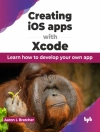th CICLing 2010 was the 11 Annual Conference on Intelligent Text Processing and Computational Linguistics. The CICLing conferences provide a wide-scope forum for discussion of the art and craft of natural language processing research as well as the best practices in its applications. This volume contains three invited papers and the regular papers accepted for oral presentation at the conference. The papers accepted for poster pres- tation were published in a special issue of another journal (see information on thewebsite).Since 2001, theproceedingsof CICLingconferenceshavebeen p- lished in Springer’s Lecture Notes in Computer Science series, as volumes 2004, 2276, 2588, 2945, 3406, 3878, 4394, 4919, and 5449. The volume is structured into 12 sections: – Lexical Resources – Syntax and Parsing – Word Sense Disambiguation and Named Entity Recognition – Semantics and Dialog – Humor and Emotions – Machine Translation and Multilingualism – Information Extraction – Information Retrieval – Text Categorization and Classi?cation – Plagiarism Detection – Text Summarization – Speech Generation The 2010 event received a record high number of submissions in the – year history of the CICLing series. A total of 271 papers by 565 authors from 47 countriesweresubmittedforevaluationbythe International Program Committee (see Tables 1 and 2). This volume contains revised versions of 61 papers, by 152 authors, selected for oral presentation; the acceptance rate was 23%.
สารบัญ
Lexical Resources.- Planning the Future of Language Resources: The Role of the FLa Re Net Network.- Cross-Lingual Alignment of Frame Net Annotations through Hidden Markov Models.- On the Automatic Generation of Intermediate Logic Forms for Word Net Glosses.- Worth Its Weight in Gold or Yet Another Resource — A Comparative Study of Wiktionary, Open Thesaurus and Germa Net.- Issues in Analyzing Telugu Sentences towards Building a Telugu Treebank.- Eus Prop Bank: Integrating Semantic Information in the Basque Dependency Treebank.- Morphological Annotation of a Corpus with a Collaborative Multiplayer Game.- Syntax and Parsing.- Computational Models of Language Acquisition.- ETL Ensembles for Chunking, NER and SRL.- Unsupervised Part-of-Speech Disambiguation for High Frequency Words and Its Influence on Unsupervised Parsing.- A Machine Learning Parser Using an Unlexicalized Distituent Model.- Ontology-Based Semantic Interpretation as Grammar Rule Constraints.- Towards a Cascade of Morpho-syntactic Tools for Arabic Natural Language Processing.- An Open-Source Computational Grammar for Romanian.- Chinese Event Descriptive Clause Splitting with Structured SVMs.- Word Sense Disambiguation and Named Entity Recognition.- An Experimental Study on Unsupervised Graph-based Word Sense Disambiguation.- A Case Study of Using Web Search Statistics: Case Restoration.- A Named Entity Extraction using Word Information Repeatedly Collected from Unlabeled Data.- A Distributional Semantics Approach to Simultaneous Recognition of Multiple Classes of Named Entities.- Semantics and Dialog.- The Recognition and Interpretation of Motion in Language.- Flexible Disambiguation in DTS.- A Syntactic Textual Entailment System Based on Dependency Parser.- Semantic Annotation of Transcribed Audio Broadcast News Using Contextual Features in Graphical Discriminative Models.- Lexical Chains Using Distributional Measures of Concept Distance.- Incorporating Cohesive Devices into Entity Grid Model in Evaluating Local Coherence of Japanese Text.- A Sequential Model for Discourse Segmentation.- Towards Automatic Detection and Tracking of Topic Change.- Modelling Illocutionary Structure: Combining Empirical Studies with Formal Model Analysis.- A Polyphonic Model and System for Inter-animation Analysis in Chat Conversations with Multiple Participants.- Humor and Emotions.- Computational Models for Incongruity Detection in Humour.- Emotions in Words: Developing a Multilingual Word Net-Affect.- Emotion Holder for Emotional Verbs – The Role of Subject and Syntax.- Machine Translation and Multilingualism.- A Chunk-Driven Bootstrapping Approach to Extracting Translation Patterns.- Computing Transfer Score in Example-Based Machine Translation.- Systematic Processing of Long Sentences in Rule Based Portuguese-Chinese Machine Translation.- Syntax Augmented Inversion Transduction Grammars for Machine Translation.- Syntactic Structure Transfer in a Tamil to Hindi MT System – A Hybrid Approach.- A Maximum Entropy Approach to Syntactic Translation Rule Filtering.- Mining Parenthetical Translations for Polish-English Lexica.- Automatic Generation of Bilingual Dictionaries Using Intermediary Languages and Comparable Corpora.- Hierarchical Finite-State Models for Speech Translation Using Categorization of Phrases.- Drive-by Language Identification.- Identification of Translationese: A Machine Learning Approach.- Information Extraction.- Acquiring IE Patterns through Distributional Lexical Semantic Models.- Multi-view Bootstrapping for Relation Extraction by Exploring Web Features and Linguistic Features.- Sequential Patterns to Discover and Characterise Biological Relations.- Extraction of Genic Interactions with the Recursive Logical Theory of an Ontology.- Ontological Parsing of Encyclopedia Information.- Information Retrieval.- Selecting the N-Top Retrieval Result Lists for an Effective Data Fusion.- Multi Word Term Queries for Focused Information Retrieval.- Optimal IR: How Far Away?.- Adaptive Term Weighting through Stochastic Optimization.- Text Categorization and Classification.- Enhancing Text Classification by Information Embedded in the Test Set.- Rank Distance Aggregation as a Fixed Classifier Combining Rule for Text Categorization.- The Influence of Collocation Segmentation and Top 10 Items to Keyword Assignment Performance.- A General Bio-inspired Method to Improve the Short-Text Clustering Task.- An Empirical Study on the Feature’s Type Effect on the Automatic Classification of Arabic Documents.- Plagiarism Detection.- Word Length n-Grams for Text Re-use Detection.- Who’s the Thief? Automatic Detection of the Direction of Plagiarism.- Text Summarization.- Integer Linear Programming for Dutch Sentence Compression.- GEMS: Generative Modeling for Evaluation of Summaries.- Quantitative Evaluation of Grammaticality of Summaries.- Speech Generation.- Integrating Contrast in a Framework for Predicting Prosody.












